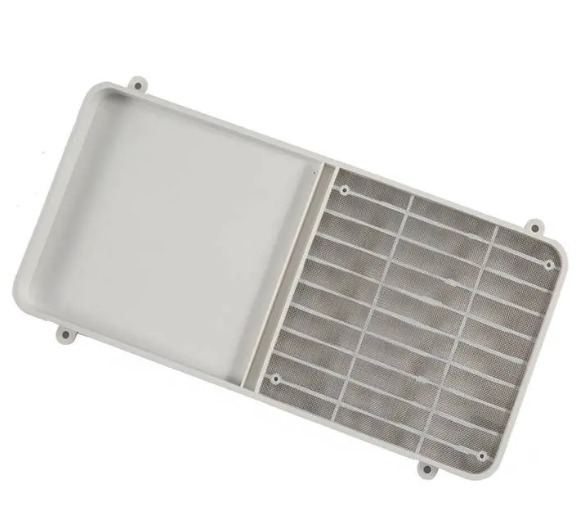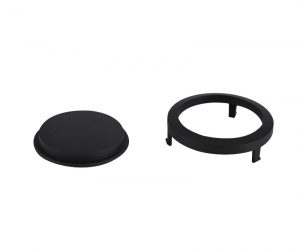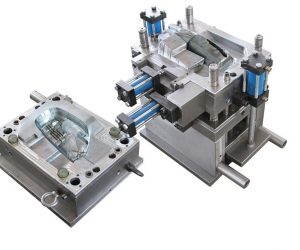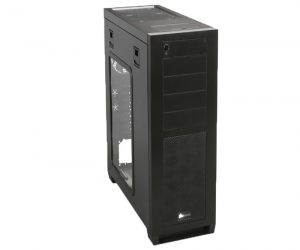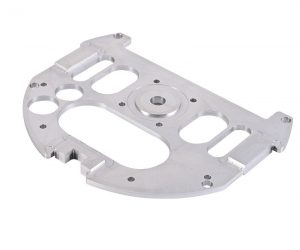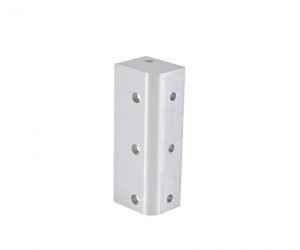The precision parts machining industry has always been a cornerstone of modern manufacturing, serving industries such as aerospace, automotive, medical devices, and electronics. However, as industries evolve and market demands shift towards greater customization, higher quality, and faster delivery times, the precision machining sector is undergoing a dramatic transformation. This transformation is driven by emerging technologies, such as Industry 4.0, advanced automation, and robotics, alongside growing demands for sustainability and environmental responsibility.
The next generation of precision parts machining holds exciting possibilities, fueled by advancements in digitalization, automation, robotics, and materials science. As manufacturers adapt to this new landscape, those who can embrace these technological shifts will gain a competitive edge in an increasingly specialized and quality-conscious market.
Technological Advancements Driving Precision Parts Machining
1. The Rise of Industry 4.0 in Precision Machining
The term Industry 4.0 refers to the current trend of automation and data exchange in manufacturing technologies. It represents the convergence of several advanced technologies, including Internet of Things (IoT), artificial intelligence (AI), big data analytics, robotics, and advanced manufacturing systems. These innovations are helping manufacturers enhance productivity, reduce costs, and meet increasingly complex demands for high-precision parts.
Key advancements in Industry 4.0 include:
- Advanced CNC systems: Modern Computer Numerical Control (CNC) machines are now equipped with advanced sensors and connected software that allow real-time monitoring and adjustments during machining processes. This leads to higher accuracy, reduced cycle times, and optimized machine efficiency.
- Smart Sensors: The integration of smart sensors allows machines to "sense" real-time data about parameters like temperature, vibration, pressure, and tool wear. This data is sent to central control systems for analysis, enabling predictive maintenance and real-time adjustments that enhance precision and extend machine life.
- Digital Twin Technology: A Digital Twin is a virtual replica of a physical machine or system, which allows manufacturers to simulate, analyze, and predict machine behavior in real-time. This helps in fine-tuning operations, reducing machine downtime, and anticipating failures before they happen.
2. Advancements in Automation and Robotics
Automation and robotics have dramatically transformed precision machining, introducing higher levels of speed, efficiency, and precision.
- Automation in CNC machining: Automation systems can now control and monitor the entire machining process, from loading and unloading materials to controlling tool paths and quality checks. Automated machines can run 24/7 with minimal human intervention, significantly increasing throughput.
- Robotics: Industrial robots are increasingly used for tasks that require precision, such as tool handling, part placement, and welding. By integrating robots into production lines, manufacturers can achieve unmatched accuracy in repetitive tasks and handle complex shapes and materials that are difficult for human operators.
Benefits of automation and robotics in precision machining:
- Improved Accuracy: Robots can perform tasks with consistent precision, reducing the risk of human error. As robots can be programmed to work to extremely tight tolerances, the overall quality of parts improves, leading to less rework and scrap.
- Faster Production: With robotic systems running 24/7 without breaks, manufacturers can drastically reduce cycle times, meet tight production schedules, and respond more quickly to customer demands for customized parts.
- Cost Reduction: Automation leads to lower labor costs, less waste, and more efficient use of resources. Additionally, robots' ability to work without downtime reduces operational costs and allows manufacturers to scale production quickly.
- Flexibility and Customization: Robots and automated systems allow manufacturers to quickly switch between different parts and production runs, making it easier to respond to market demand for customized and high-precision parts.
3. The Role of Artificial Intelligence and Machine Learning
Artificial Intelligence (AI) and Machine Learning (ML) are becoming crucial to the evolution of precision machining. AI is being integrated into manufacturing systems to improve process optimization, predictive maintenance, and quality control.
- Predictive Maintenance: AI-driven systems can analyze data from sensors and previous machine performances to predict when equipment is likely to fail or require maintenance. This reduces unplanned downtime and ensures that machinery is functioning at its best.
- Process Optimization: Machine learning algorithms can identify patterns in production data, helping manufacturers optimize machining parameters for speed, efficiency, and quality. AI can continuously adjust machine settings to achieve optimal performance in real-time, reducing errors and increasing precision.
- Quality Control: Vision systems powered by AI are now being used in conjunction with robotics to perform in-line inspection of machined parts, ensuring they meet quality standards before they proceed to the next stage of production. This reduces human inspection errors and increases throughput.
Emerging Materials for Precision Machining
As manufacturers look to meet the needs of industries like aerospace, automotive, and medical devices, the demand for advanced materials is growing. These materials offer better performance, strength, and durability, making them ideal for high-precision machining.
- Composite Materials: Lightweight, high-strength composites are increasingly used in aerospace and automotive industries. These materials are often harder to machine, requiring more specialized techniques, but their advantages—such as lightweight construction and enhanced strength—make them indispensable in modern manufacturing.
- Ceramic Materials: Ceramics, with their high-temperature resistance and wear resistance, are crucial in industries such as aerospace and medical devices. They are challenging to machine, but advancements in diamond-coated tools and high-performance CNC systems are helping to make them easier to work with.
- Smart Materials: Self-healing materials and shape-memory alloys are exciting areas of research. These materials can return to their original shape after deformation or heal cracks over time, offering new possibilities for high-performance applications in fields like aerospace, defense, and biomedical devices.
- High-Temperature Alloys: As industries push the boundaries of performance, high-temperature alloys like titanium and nickel-based superalloys are becoming more common. These materials require highly advanced machining techniques and specialized tools to maintain precision and quality during production.
Sustainability and Green Manufacturing in Precision Machining
As environmental concerns grow, manufacturers in the precision machining industry must meet new challenges related to sustainability. The increasing demand for green manufacturing practices has led to significant changes in how parts are produced.
- Energy Efficiency: Manufacturers are integrating energy-efficient technologies, such as regenerative braking systems and energy-efficient motors, into CNC machines and robotic systems to minimize energy consumption.
- Waste Reduction: Advanced techniques such as closed-loop recycling and the use of additive manufacturing for prototyping and low-volume production are helping to reduce material waste. Additionally, manufacturers are focusing on lean manufacturing practices to eliminate inefficiencies and waste.
- Sustainable Materials: The use of biodegradable plastics, recycled metals, and eco-friendly coatings is on the rise as manufacturers seek to reduce their carbon footprint and comply with environmental regulations.
The Future of Precision Parts Machining
The future of precision parts machining is filled with exciting opportunities and challenges. As technology continues to evolve, manufacturers who embrace innovations such as automation, robotics, AI, and advanced materials will be better equipped to meet the demands of the increasingly specialized and quality-driven market.
Key takeaways for the future of the industry include:
- Increased automation and robotics will streamline production processes, improving both efficiency and accuracy.
- The development of advanced materials will open up new possibilities in aerospace, medical, and automotive industries, pushing the limits of precision machining.
- Industry 4.0 technologies will enhance production capabilities through real-time monitoring, predictive maintenance, and improved process optimization.
- A focus on sustainability will drive the industry toward more energy-efficient practices, waste reduction, and the adoption of eco-friendly materials.
By staying ahead of these trends and investing in the latest technologies, manufacturers can ensure they remain competitive in a rapidly changing industry, delivering high-performance precision parts that meet the most demanding requirements.
Integration of Artificial Intelligence and Machine Learning in Precision Parts Machining
Artificial intelligence (AI) and machine learning (ML) have revolutionized many industries, and precision parts machining is no exception. By leveraging AI and ML technologies, manufacturers can automate complex tasks, improve operational efficiency, and enhance the accuracy of machined parts. These technologies enable manufacturers to streamline their processes, reduce errors, and achieve greater consistency and precision in their production lines.
Examples of AI and Machine Learning in Precision Machining
- Automated Inspection Systems One of the most transformative applications of AI in precision machining is automated visual inspection. Using image recognition software, machines can now detect defects or faults in machined parts with far greater accuracy than human operators. The system analyzes high-resolution images captured during the manufacturing process to identify issues such as surface defects, dimensional inaccuracies, or assembly errors. This leads to faster detection of quality issues, reducing defects in the final product and improving overall quality assurance.
- Predictive Maintenance Machine learning algorithms are increasingly being used to analyze data collected from sensors embedded in manufacturing equipment. By monitoring parameters such as vibration, temperature, and machine performance, AI can predict when a machine or part is likely to fail. This enables predictive maintenance, where repairs and part replacements are scheduled before a breakdown occurs, significantly reducing downtime and avoiding costly repairs or disruptions in production.
- Optimization of CNC Programming CNC (Computer Numerical Control) machines are essential for precision machining. AI-powered optimization algorithms can automatically adjust machining parameters such as spindle speed, feed rate, and depth of cut based on the material being used. By analyzing vast amounts of historical performance data, AI can generate the most efficient tool paths, ensuring that parts are machined to the highest precision while minimizing cycle times and material waste.
Potential for Further AI and Machine Learning Integration
The integration of AI and machine learning in precision machining is still in its early stages, with significant room for expansion. As technology evolves, here are a few areas where AI can further transform the industry:
- Virtual Reality (VR) and AI Integration One exciting possibility is the integration of VR with AI-powered CAD/CAM (Computer-Aided Design/Computer-Aided Manufacturing) software. This combination could allow designers and engineers to virtually interact with 3D models of parts and machines, making it easier to simulate and optimize machining processes before they are physically executed. It would also allow real-time adjustments and testing of designs, improving the prototyping and production planning stages.
- Internet of Things (IoT) for Real-Time Monitoring IoT sensors can collect vast amounts of real-time data from machines, tools, and materials during the production process. By integrating these sensors with AI and machine learning algorithms, manufacturers can gain valuable insights into equipment performance, part quality, and workflow efficiency. This real-time data can then be analyzed to predict potential bottlenecks, adjust production schedules, and enhance overall factory automation, leading to autonomous production environments.
How AI and Machine Learning Improve Accuracy and Quality
AI and machine learning improve accuracy and quality in several key ways:
- Reduced Downtime Predictive maintenance powered by AI reduces unplanned downtime by anticipating equipment failures before they occur. By preventing machine breakdowns, manufacturers can maintain consistent production speeds, improve uptime, and ensure parts are produced with minimal disruption to quality.
- Higher Precision and Lower Error Rates AI algorithms used in CNC programming improve the precision of machine movements, ensuring that each part meets the required specifications. These optimizations also reduce the chances of human error and the likelihood of defects, making it possible to produce parts with tighter tolerances and more complex geometries than ever before.
- Real-Time Quality Control Automated visual inspection systems powered by AI detect defects earlier in the production process, enabling quicker corrective actions. This reduces the likelihood of defective parts progressing to the final stages of production, ultimately enhancing overall product quality.
- Optimization of Cutting Conditions AI-driven systems optimize cutting conditions to minimize tool wear and energy consumption while maximizing the life of tools and the quality of parts. This contributes to both operational efficiency and the sustainability of the manufacturing process.
Use of 3D Printing and Additive Manufacturing in Precision Machining
Introduction to 3D Printing and Additive Manufacturing
The use of 3D printing and additive manufacturing (AM) has revolutionized the precision machining industry, particularly when it comes to producing complex geometries that are difficult or impossible to achieve with traditional subtractive methods. AM allows manufacturers to create parts directly from digital models, layer by layer, offering increased flexibility and speed in production.
Examples of 3D Printing in Precision Machining
- Rapid Prototyping Rapid prototyping is one of the most significant applications of 3D printing in precision machining. Engineers can quickly generate physical models of designs for evaluation, testing, and iteration. This reduces the time and cost typically associated with traditional prototyping methods and accelerates the product development cycle.
- Tooling Production 3D printing can also be used to create customized tooling, including jigs, fixtures, and molds. These tools are produced precisely to match the specific needs of a given manufacturing process, allowing for greater flexibility and reducing lead times compared to traditional methods such as CNC milling or injection molding.
- Small-Batch Production One of the standout advantages of 3D printing is its ability to produce small batches or even one-off parts cost-effectively. This makes it ideal for manufacturers who need to produce bespoke parts or replacement components without having to set up expensive traditional tooling for each batch.
How 3D Printing is Changing Precision Machining
3D printing has fundamentally changed how precision machining is approached. While traditional machining methods rely on subtractive manufacturing, where material is removed from a solid block, additive manufacturing builds material up in layers, allowing for the creation of more complex, intricate parts that are lightweight yet strong. Some of the key ways in which 3D printing impacts the industry include:
- Faster Lead Times 3D printing significantly reduces lead times for prototype and tool creation, which allows manufacturers to speed up the product development process. Parts can be printed on demand, reducing the need for traditional manufacturing setups.
- Complex Geometries Traditional machining often requires significant effort to create parts with complex geometries, especially when these features need to be internally integrated (e.g., internal channels or intricate lattice structures). Additive manufacturing removes these challenges, allowing for more complex and efficient designs.
- Reduced Material Waste Unlike subtractive manufacturing, where material is removed from a larger block, additive manufacturing uses only the material required to create the part. This reduces material waste, contributing to more sustainable production practices.
- Enhanced Customization AM enables the production of highly customized parts that can be tailored to the specific needs of a client or project. This is especially valuable in industries like medical devices or aerospace, where precision and customization are essential.
Growing Demand for Sustainable and Eco-Friendly Practices
Sustainability has become a top priority in the manufacturing world, driven by both consumer demand for eco-friendly products and increasing regulations on waste and emissions. The precision machining industry is evolving to meet these challenges with green technologies and materials.
Examples of Sustainable Precision Machining Practices
- Recycling Metals Manufacturers are increasingly turning to recycled metals to reduce the environmental impact of mining and material extraction. Using recycled materials also lowers energy consumption compared to using virgin metals.
- Green Cutting Technologies Technologies like laser cutting, water jet cutting, and electrical discharge machining (EDM) allow for higher precision with less material waste. These methods also consume less energy and reduce the need for lubrication, making them more environmentally friendly.
- Additive Manufacturing for Sustainability 3D printing inherently reduces material waste, as it builds up material layer by layer instead of cutting away excess. This can significantly lower the carbon footprint of manufacturing processes and support the circular economy by enabling the reuse of materials.
Potential for Further Development
- Optimized Part Designs: Software innovations in the design phase allow manufacturers to design parts with minimal material usage, leading to further reductions in waste.
- Energy-Efficient Machines: Advances in energy-efficient machinery and automation will continue to reduce the energy consumption of precision machining processes.
Expansion of Precision Machining into New Industries
Precision machining is no longer confined to traditional sectors like aerospace and automotive. The medical device and automotive engineering industries are driving the expansion of precision machining into new and exciting areas.
Precision Machining in Medical Devices
The demand for customized medical implants, such as orthopedic devices, is increasing, and precision machining provides the necessary accuracy for these parts. Custom solutions, such as personalized joint replacements, are becoming more feasible due to the capabilities of precision machining combined with new materials and 3D printing technologies.
Precision Machining in Automotive Engineering
Precision machining plays a critical role in creating lightweight, high-performance components for the automotive industry. Manufacturers rely on precision parts to produce components that meet exacting tolerances for safety, fuel efficiency, and performance.
Conclusion
The future of precision parts machining looks incredibly promising, driven by advancements in AI, machine learning, 3D printing, automation, and sustainability. These technologies are reshaping the way manufacturers approach production, enabling faster, more efficient, and higher-quality processes. As industries continue to demand more specialized and high-performance parts, precision
What is the future of machining?
The future of machining is marked by several key trends that will shape the industry:
- Advanced Automation: Automation continues to revolutionize machining processes, enabling higher production speeds, improved accuracy, and reduced labor costs. The integration of robotics, machine vision systems, and artificial intelligence allows for enhanced precision, reliability, and efficiency.
- Digitalization and Connectivity: The adoption of digital technologies and connectivity is transforming the machining landscape. Real-time data collection, analysis, and remote monitoring enable predictive maintenance, optimized machining parameters, and improved quality control. Digital twin technology allows for virtual prototyping and simulations, enhancing the overall efficiency and precision of machining operations.
- Multi-axis Machining: Multi-axis machining, including 5-axis and even 6-axis machining, offers increased flexibility and the ability to produce complex shapes and geometries. This technology enables precise machining of parts from multiple angles, reducing the need for multiple setups and increasing production efficiency.
Why is precision so important in manufacturing parts?
Precision is of paramount importance in manufacturing parts for several reasons:
- Functional Performance: Precision ensures that parts meet the required specifications and tolerances, ensuring optimal functionality. Whether it is in the automotive, aerospace, medical, or any other industry, precise parts are essential for reliable performance and safety.
- Interchangeability and Compatibility: Precise manufacturing guarantees that parts can be easily interchanged and assembled, thereby reducing downtime, improving maintenance, and facilitating efficient operations. Precision parts ensure compatibility and smooth functioning within complex systems.
- Quality and Aesthetics: Precision machining ensures high-quality parts with excellent surface finish and aesthetic appeal. In industries like consumer electronics or luxury goods, precision is crucial in creating high-end products that meet customer expectations.
What are precision machined parts?
Precision machined parts are components manufactured with extremely tight tolerances and high accuracy. These parts are typically produced using advanced machining techniques such as CNC (computer numerical control) machining. Precision machined parts can vary in complexity, size, and material depending on the industry and application. They are used in a wide range of sectors, including automotive, aerospace, medical, electronics, and many more. Examples of precision machined parts include engine components, turbine blades, surgical instruments, optical lenses, and intricate mechanical components.
In the ever-evolving landscape of precision parts machining, embracing trends and adopting innovative technologies will be crucial for manufacturers to maintain a competitive edge and meet the increasing demands for impeccable precision and exceptional quality.
